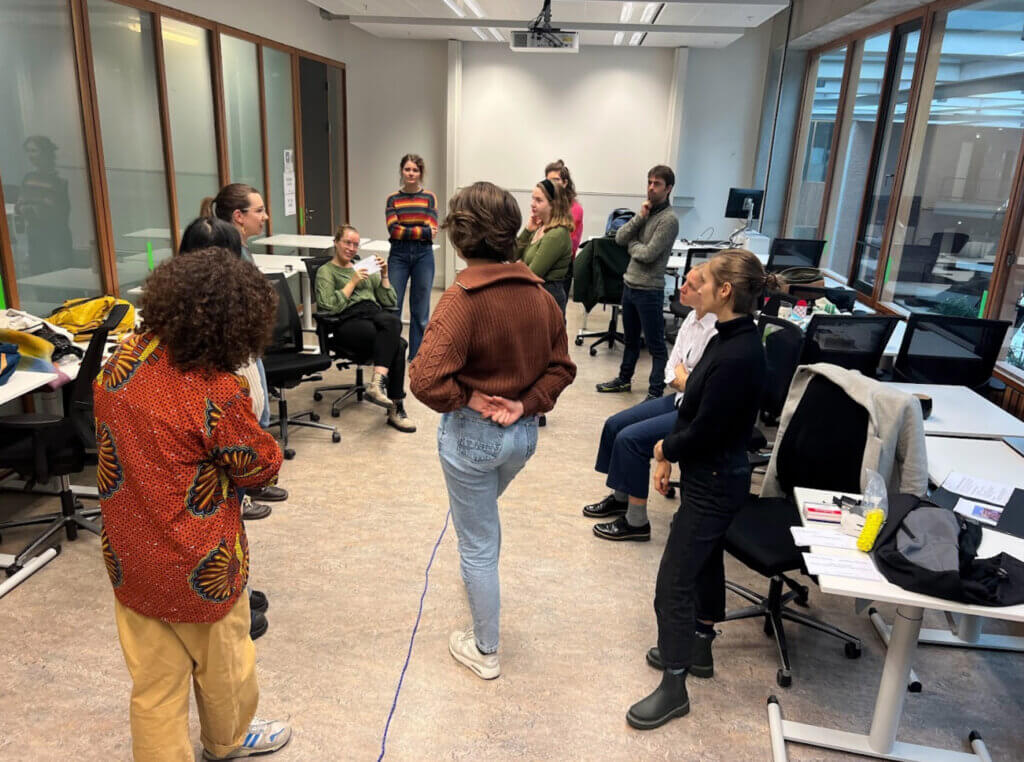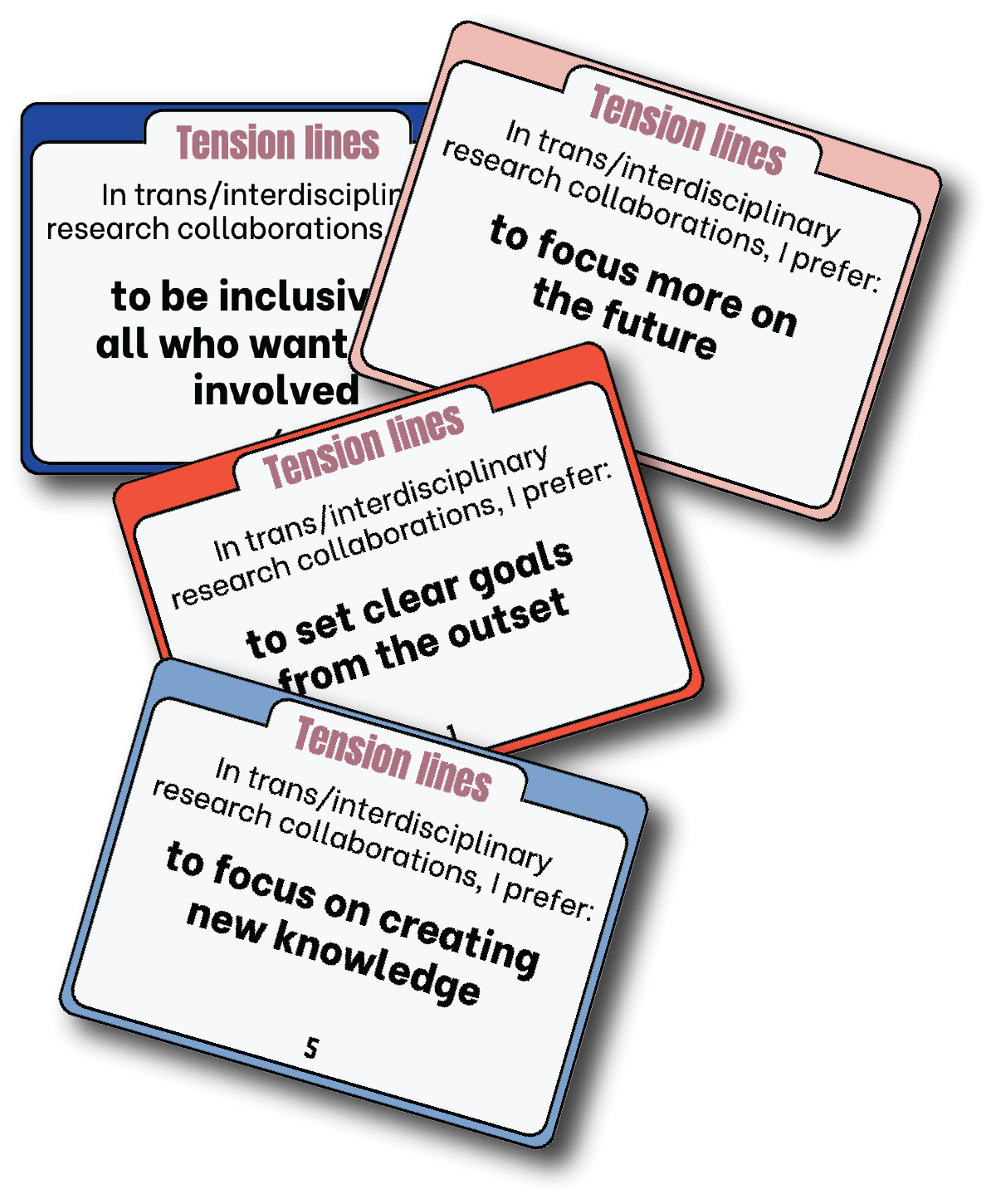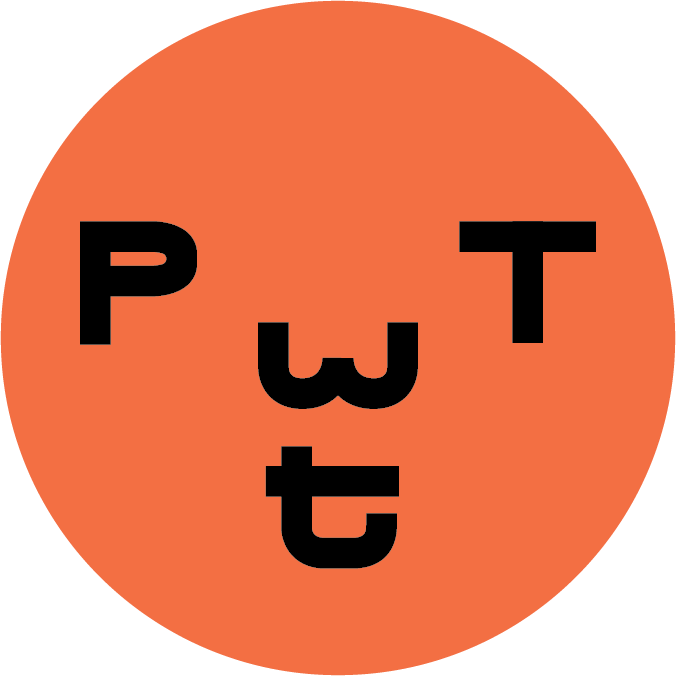
Tension Lines
Explore the values of your team members in a web of intertwining worldviews. A series of questions allows the group to position themselves in relation to their different perspectives.
A 20+ minute game for 5-unlimited number of players (space dependent).
Is this the game for your group?
- 20+ minutes duration
- 5 to unlimited players (includes 1 facilitator)
- Requires facilitator
- Easy setup (does require clearing/finding a large space, otherwise easy)
- Easy difficulty (challenging questions about values in transdisciplinary work)
- Medium imaginative load (lots of discussing open-ended questions)
- Low-Medium trust required (players talk about personal values, views)
Why play this?
In inter- and transdisciplinary collaborations we usually experience tensions due to fundamentally different values, perspectives, assumptions orand research methods (in research context). This is not wrong, but needs to be anticipated and navigated. This game helps to explore and make visible different perspectives on how we collaborate.
- Surfacing worldviews (Understanding each other’s position(alitie)s and assumptions about desirable futures)
Objective
Explore individual and collective worldviews.
Components
This activity needs to be played in a large space to allow for participants to walk around. This activity can also be done in a very minimalistic version without any of the materials mentioned here.
- Rulebook (this page)
- Transdisciplinary Questions deck (17 cards, included below or download PDF)
- Long rope (2 to 5m long)
- 2 binder clips (to attach cards to the rope)
This activity can also be done in a very minimalistic version without any of the materials mentioned here. Note that description assumes you have the materials.
How to play?
- Choose one person to facilitate the game. The facilitator should use this rulebook from this point forward. Optional: the facilitator can identify someone to reflect on the outcomes of the game after it has been played.
- As an entire group, agree upon an amount of time the game should take or number of statements you want to play, and make note of when you should conclude play. Allow 5-10 minutes for final reflection.
- Have players find / clear a space large enough for all of them to spread out in the space where the game is played.
- (Optional) Lay out a rope straight across the space.
- Either:
a) select quotes relevant to the group; or
b) shuffle the deck and pick random quotes.
[Note that description assumes you have the materials, but this game can be adapted and played without materials as well]

Play
For each Transdisciplinary Question card you will follow the following steps:
- Announce the question:.
- Announce the scope, such as “To facilitate [transdisciplinary collaborations” ] or “To facilitate [transformative partnerships” and ] or […]” + ask the question on the card.
- Clip the card to the centre of the rope using the binder clips so that the answers point in both directions along the rope.
- Players answer on the rope: Give players ~1 minute to place themselves along this rope according to how they want to answer the question. Players should make this choice based on how they see their own feelings on this spectrum. Do not discuss exact positions at this time.
- Ask 3 or more players about their choice: Ask players about their choice. Ideally across the spectrum that is created, and try to prioritise players who have not yet spoken or discussed their answers.
- Short discussion (optional): You, the facilitator, should keeps track of whether new ideas are coming up, if the same ideas are being repeated, etc. To facilitate further discussion, some cards have additional questions on the back that the facilitator may ask.
- Reflect: use any remaining time (ideally 5 to 10 minutes) to allow players a moment to reflect together on their experience.
Tensions statements to explore (download below)

In trans- or /interdisciplinary research collaborations, I prefer…
- to set clear goals from the outset
- to be confrontational with those in power
- to focus more on the future
- to be inclusive of all who want to be involved
- to focus on creating new knowledge
- to let societal actors set the research agenda
- to focus on impact
- to use realistic scenarios
- to use dystopian futures to shock people into action
- to clarify everyone’s stakes in the collaboration
- to keep science separate from activism
- to avoid conflict at all cost
- to include the private sector in solutions
- to work towards towards technological solutions
- to establish a common language
Game end
The game ends after the allotted time has passed or after the predetermined number of statements have been discussed. Facilitators are encouraged to leave time for discussion either in small groups or in plenary. Facilitators are also encouraged to reflect on and summarise the results of the game (what are the tensions in the team? Where may we expect differences, or even conflicts?. If keeping track of this is too much for the facilitator, they may already ask one participant to play this reporting role.
Cards
You can print these cards, or just read the questions aloud.
